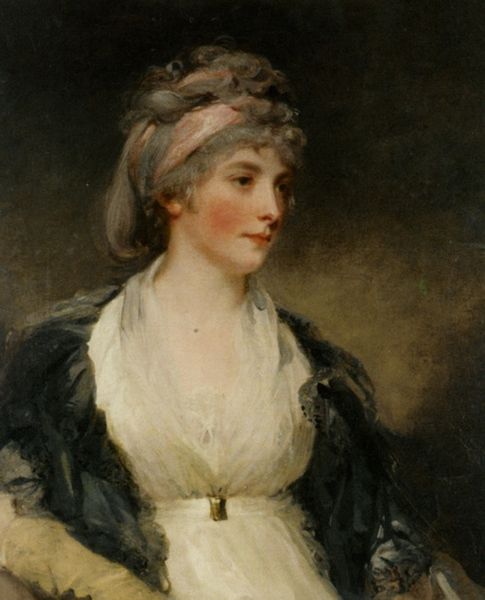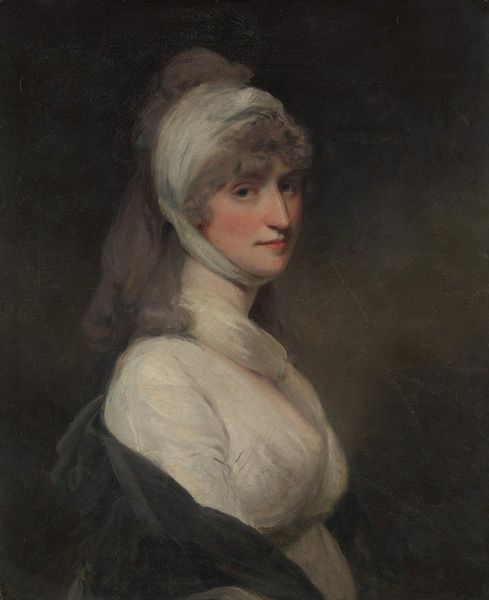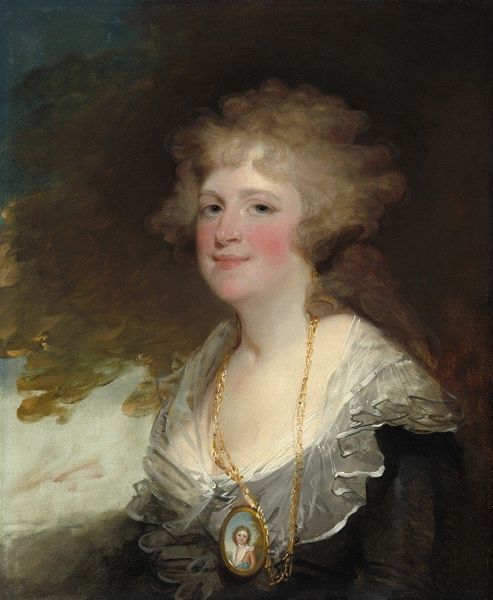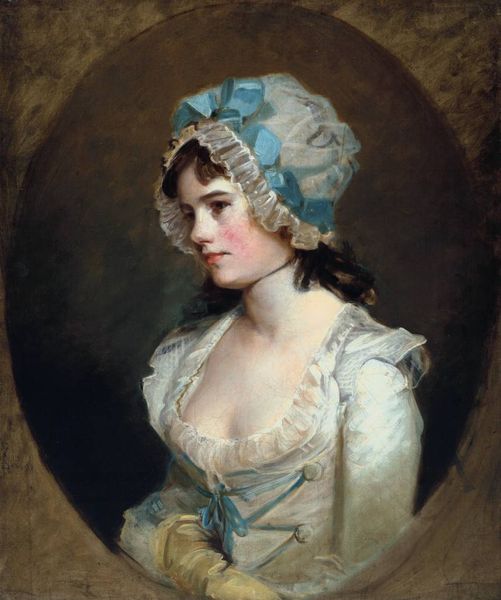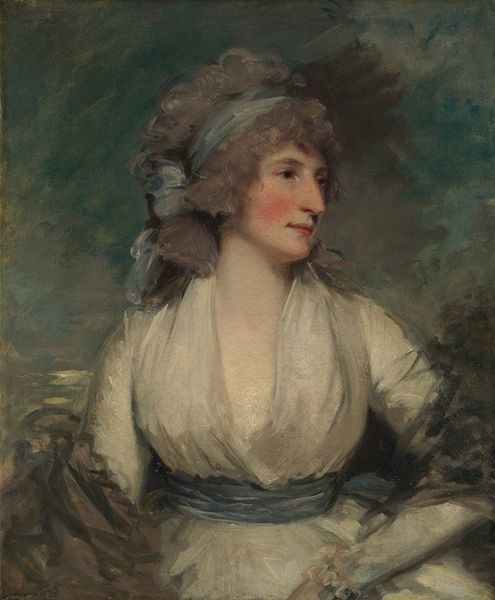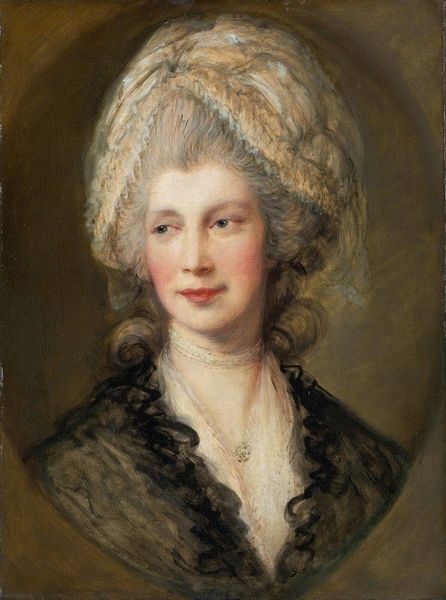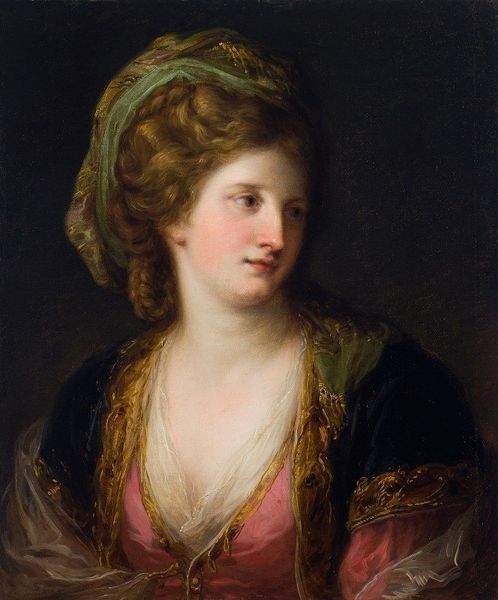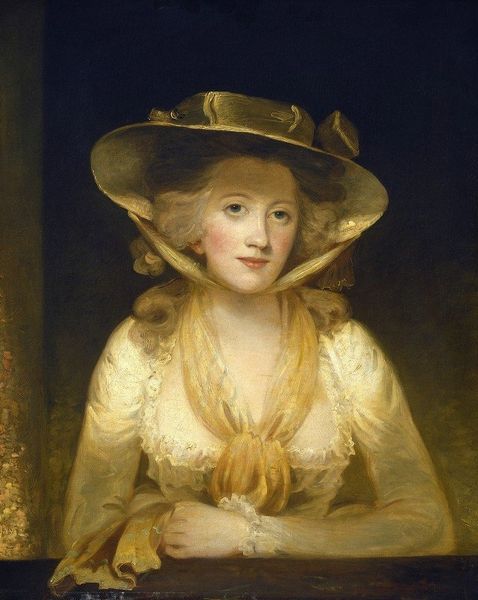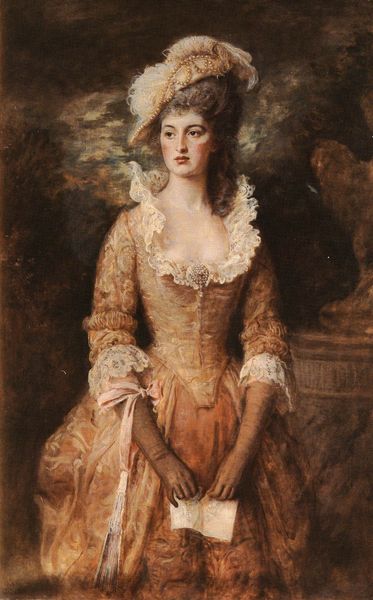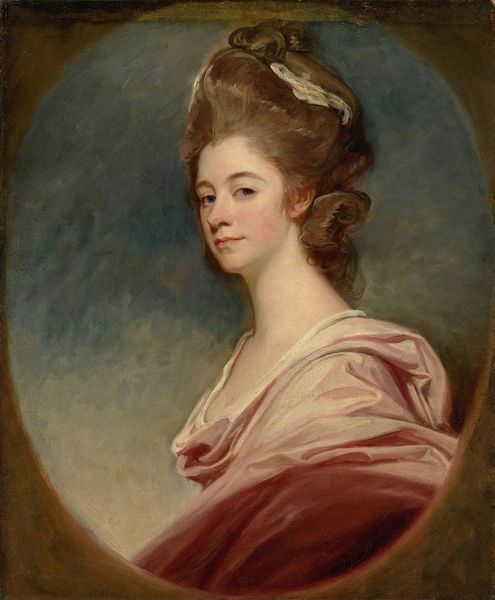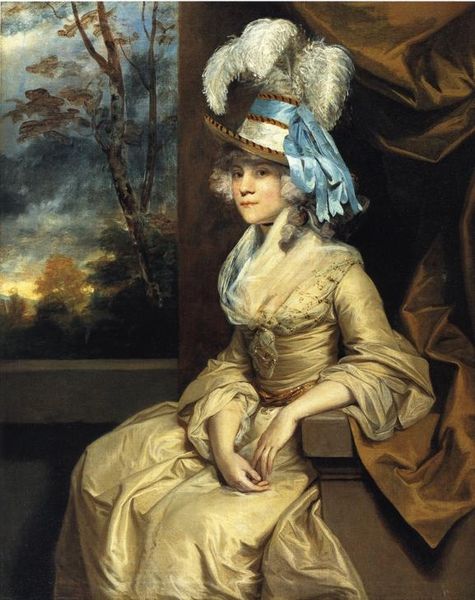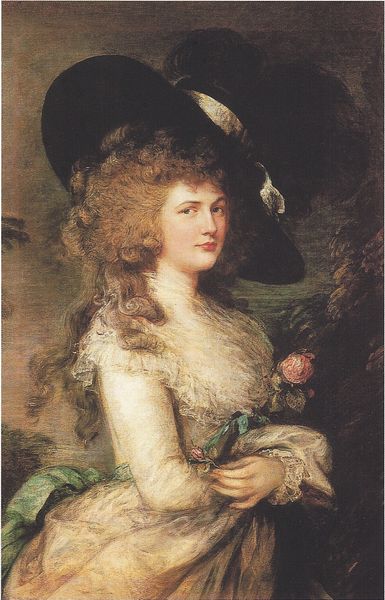
painting, oil-paint
#
portrait
#
painting
#
oil-paint
#
figuration
#
romanticism
Copyright: Public domain
Editor: Here we have John Hoppner's oil painting, "The Honorable Lucy Elizabeth Byng," created in 1799. The texture of her dress seems almost gossamer, especially compared to the darkening sky in the background. What strikes you about this portrait? Curator: The real interest lies in how Hoppner uses materials to construct an image of aristocratic femininity. Look at the layering of the paint, creating almost tactile surfaces in her clothing, which contrasts sharply with the implied wealth represented by the gold chain and the overall sumptuousness. The very fabric of her attire speaks volumes about labor and class. Editor: So you're saying the way the dress is painted reflects broader social and economic structures? Curator: Precisely. The material representation isn't just aesthetic; it reflects the labor involved in creating such garments, the access to luxury goods enjoyed by the Byng family, and, in turn, how the sitter understands the idea of value and commodity in late 18th century England. What kind of meaning is produced through all those gauzy, laboriously created layers? How does it work to naturalize a social hierarchy? Editor: That's fascinating! I hadn't considered how the depiction of fabric could reveal so much about production and privilege. Curator: These weren't mere artistic choices; they were material assertions of social status, captured through the specific qualities of oil paint, canvas and skilled craftsmanship that elevated "The Honorable Lucy Elizabeth Byng" and those like her, above so many others in England in that period. Editor: Thanks, that's given me a whole new way to think about portraiture. I will keep materiality at the front of my mind.
Comments
No comments
Be the first to comment and join the conversation on the ultimate creative platform.
